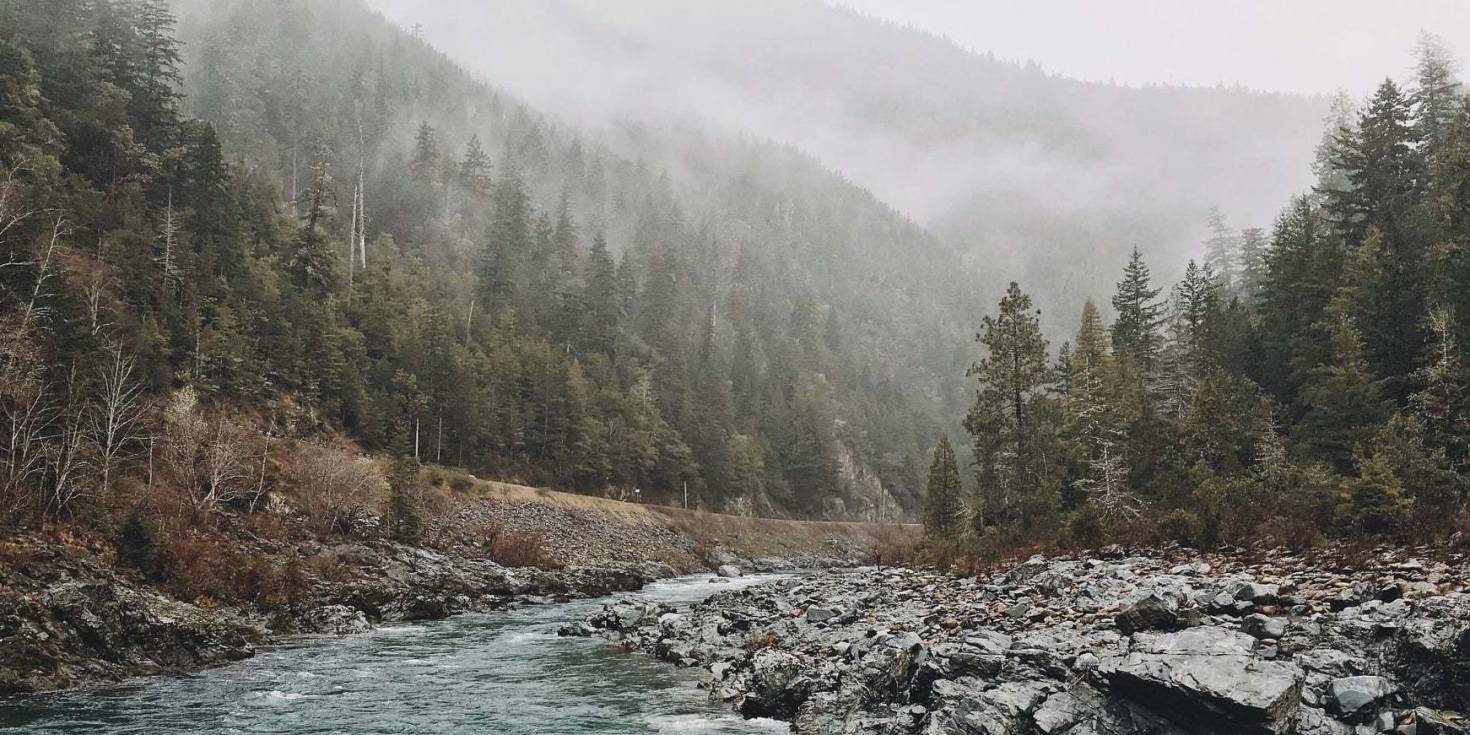The truth is no one really knows what’s going to happen next. People like certainty, but how much of life is actually certain? You can try to plan, arrange, and dictate situations and circumstances as best you can, but sometimes the unexpected happens. Since technology is at such a high level, people tend to depend on it entirely and feel lost without it.
According to the National Park Service, 46,609 people required search and rescue aid in U.S. national parks between 2004-2014. Out of those incidents, 1,578 people died while 13,957 were injured or fell ill, and the costs associated reached $51.4 million.
Life happens. It’s possible you could find yourself in an unanticipated situation where you're stripped of technology and your goal is to simply survive. An emergency is an unplanned event that requires immediate action. Even though scenarios like this happen quite often, many people aren’t familiar with basic survival skills (also known as bushcraft) that could be the difference between life and death. Since no one knows what the future holds, here’s a top 10 priority list of wilderness survival techniques that could help you survive. And if you're an outdoorsman and looking for property, make sure to check out our cabins for sale and off-grid land for sale.
1. Be prepared
Although the very nature of emergencies is that you don’t see them coming, you can still be prepared. “Wilderness” contains the word wild. If you’re going hiking, hunting, or any other related outdoor activity, know that there is risk involved and getting lost is a real possibility. Pack your gear with these facts in mind and include a fire starter, rope, poncho, knife, first-aid kit, map, compass, and so on.
People often dive into off-grid living without the proper amount of research and preparation. This can not only result in a bad experience but be downright dangerous. To learn more, check out our blog discussing details on living off the grid.
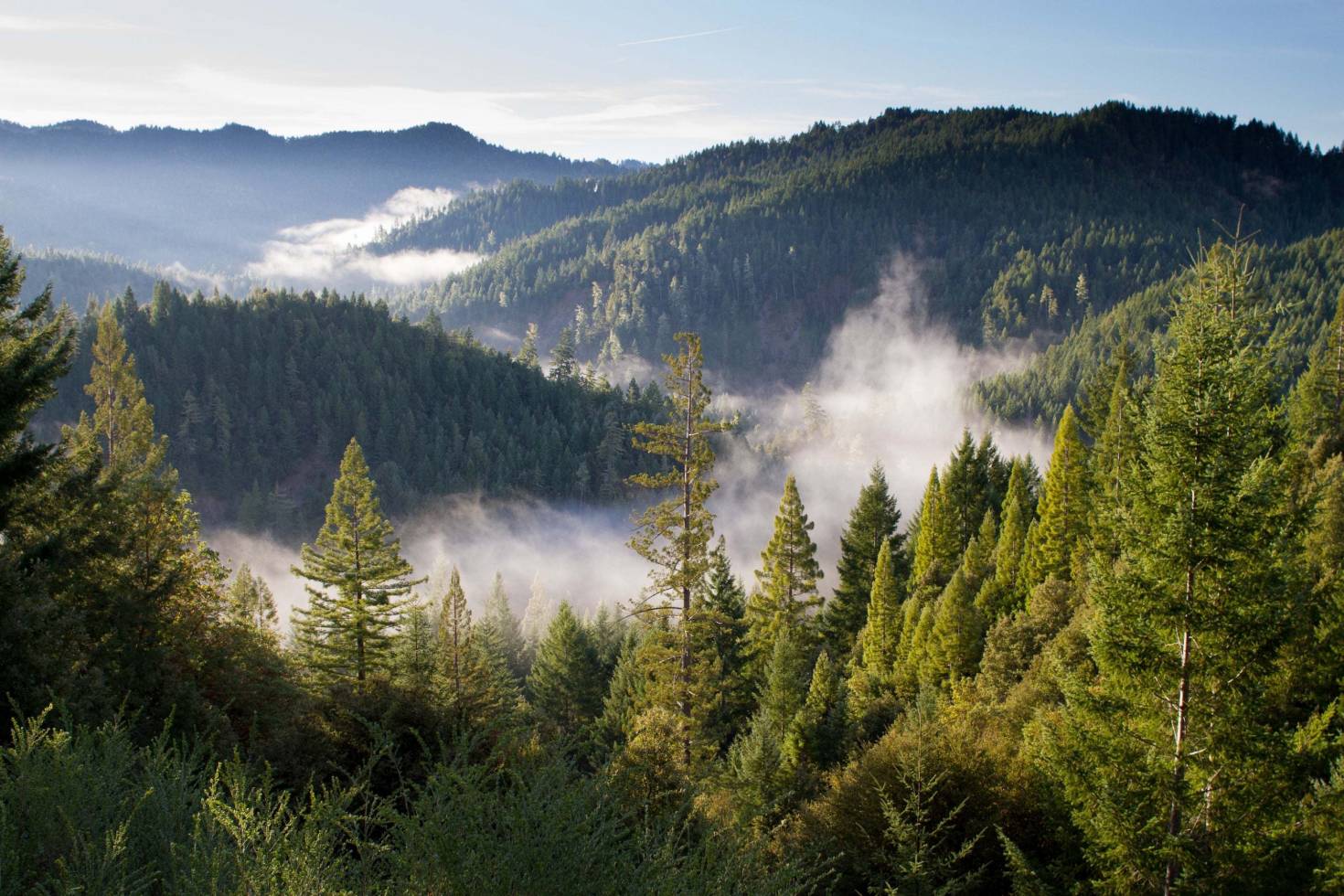
Preparation includes being willing to do some homework. Learn the basics of nature and research the area you're going beforehand. Find out where landmarks and water sources are. Analyze the topography of the land. If you’re going alone, tell someone where you’re going. If you’re going with people, make sure not to rely on them to do this for you. They may not do it, or they may not be very good at it. These apply to situations where you know you’re going outdoors. Obviously, there are scenarios you can find yourself in where you didn’t plan on being outdoors at all.
2. Cultivate a positive attitude
Charles Swindoll said, “Life is 10% what happens to you and 90% how you react to it.” Johnny Depp, playing Captain Jack Sparrow in Pirates of the Caribbean said, “The problem is not the problem. The problem is your attitude about the problem.” You're more likely to survive a difficult situation if you can develop and maintain a positive, constructive perspective. Stress uses up vital energy and causes people to make mistakes they likely wouldn’t make if they had been calm. A peaceful mind allows people to be more creative and come up with realistic, proactive solutions. Relax, breathe, be aware you can only do one thing at a time, and get busy doing it.
3. Take inventory and formulate a plan
Hopefully you have some supplies. Take a close look at what you have and don't discard anything. Something seemingly worthless in everyday life can be extremely useful in an emergency. Along with supplies, examine the surrounding area. Mark your location by destroying some of the foliage and explore a little bit. Your shelter needs to be high and dry. Where is the best place to set up camp? Are there any water sources? Are there any food sources? Use the inventory you compile to devise a plan of how to survive the next 24 hours.
4. Build a shelter
There are various types of shelters you can build, but the important thing is to build one. The type will depend on what materials are available and the weather. Hypothermia is one of the main killers in the wilderness, but hyperthermia kills as well. The Washington Post plotted hypothermia and hyperthermia deaths from 1999 to 2015, finding that cold temperatures kill more but they both kill significant amounts of people. The Lancet disclosed an observational study that was conducted by a group of experts that analyzed over 74 million deaths in various places throughout the world between 1985 and 2012. 7.71% of deaths were attributable to temperature, with 7.29% attributed to cold weather and 0.42% attributed to warm weather.
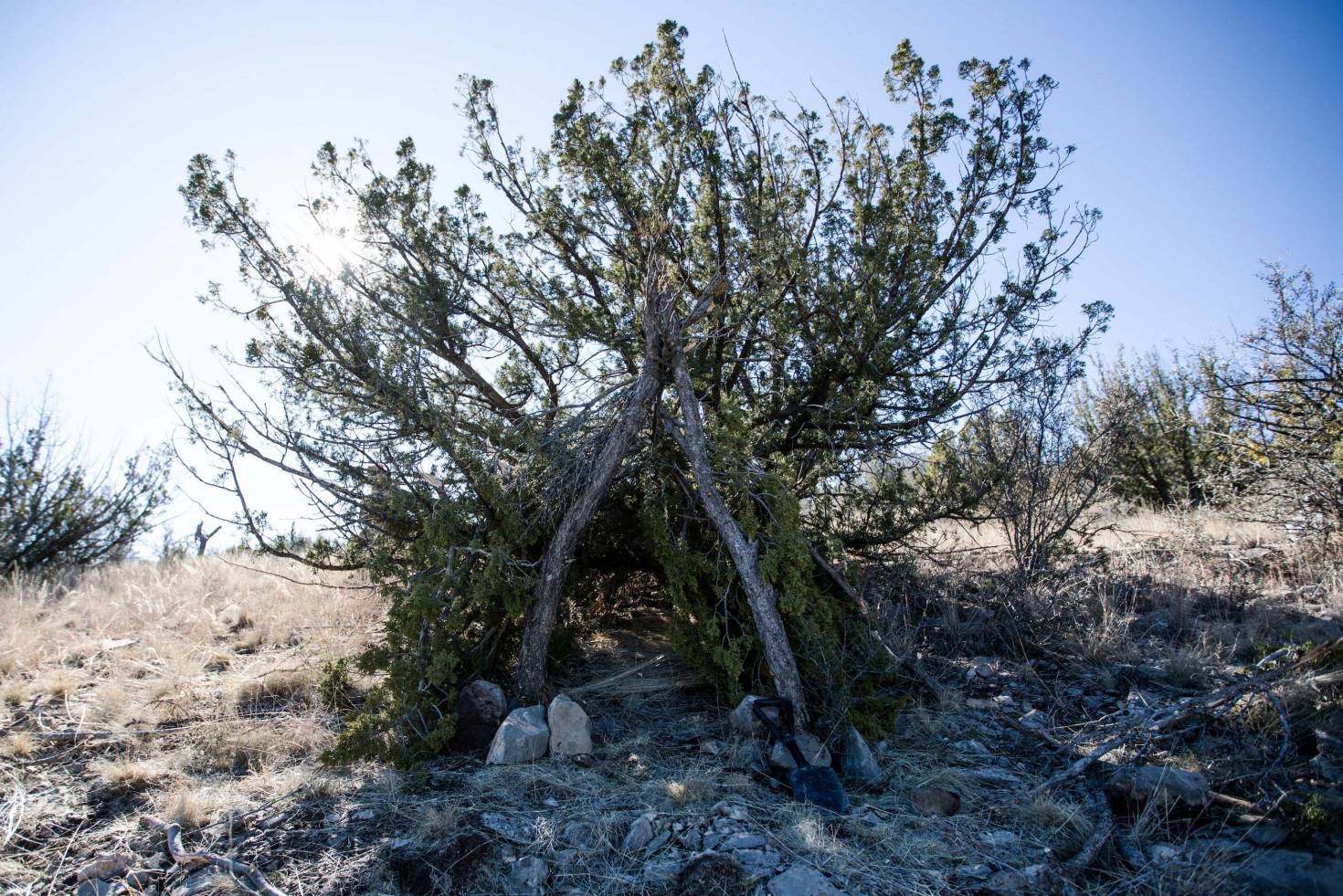
Build your shelter with temperature in mind. You’ll need overhead cover, and probably insulation. Caves are ideal for covering, but lean-tos are often available and simple to construct. You can use leaves, limbs, bushes, pine needles, or anything related for insulation and bedding. Outdoor Life does a good job of explaining how to build various types of survival shelters. If you're looking to buy your own land that already has a good shelter, take a look at our land for sale with cabins.
5. Find water
Water is basically the life-blood of humans. The human body is made up of about 60-65% water. The average person can survive 3 days without water. There are cases where people have survived 8-10 days but this isn’t the norm. You can survive considerably longer without food than without water. It's extremely important to locate a water source. Keep in mind drinking contaminated water can quickly worsen your predicament.
Rivers and streams are an obvious water source but the water probably will need to be boiled first. You can also dig for water. If you’re in a cold environment where snow is present it can be a water source. It’s better to melt it and drink it rather than eating it. Collecting rainwater is a great way to get drinkable water. Plants can be water sources as they sweat and oftentimes have dew on them in the morning.
6. Make a fire
There are many valuable benefits of fire and a few are essentially instantaneous.
- Warmth
- Water purification
- Cooking food
- Drying wet clothes
- Rescue signals
- Protection against predators and insects
- Light
- Comfort
- Morale boost

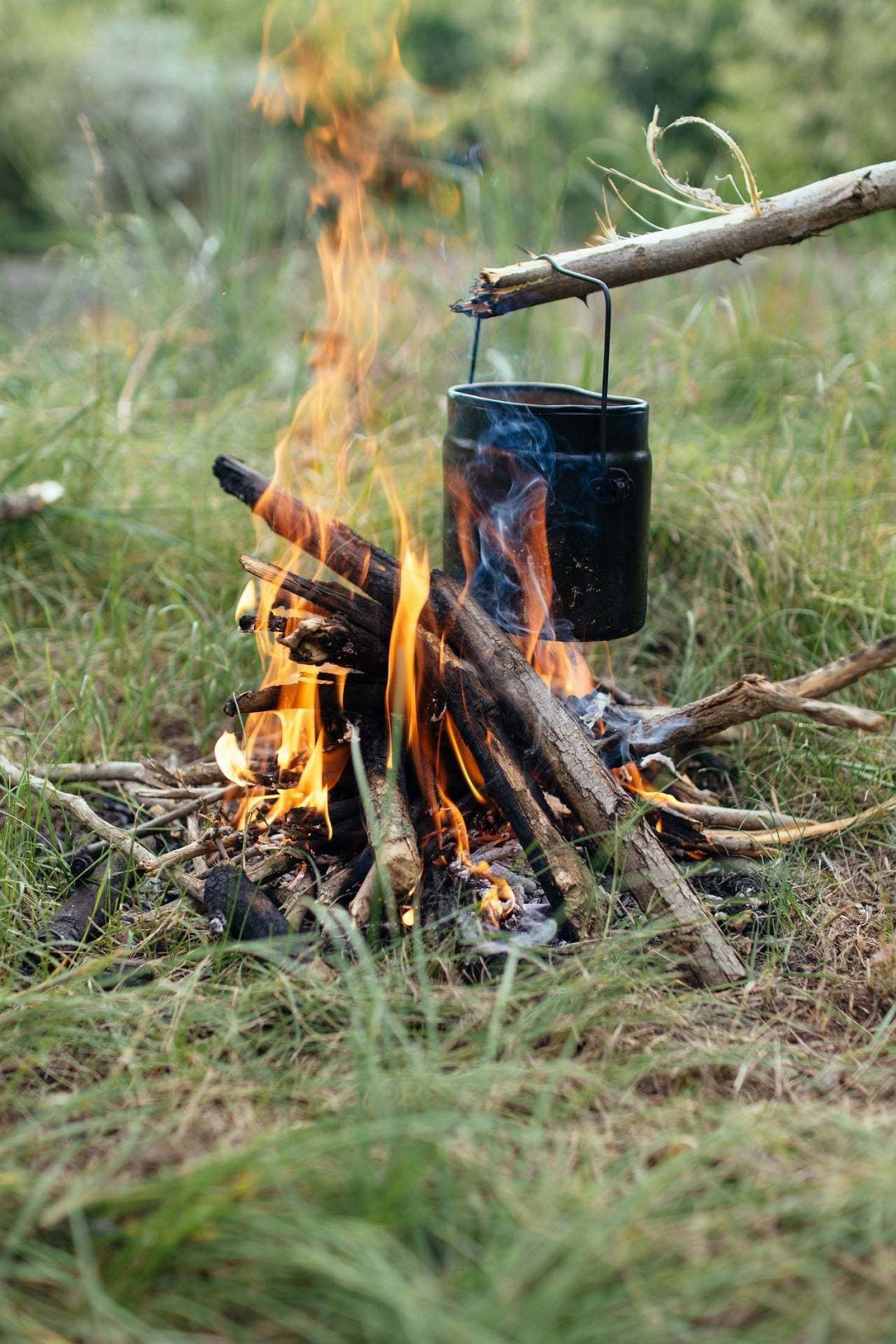
Although a lighter or matches would be the ideal fire starter method, it’s necessary to be aware of alternate techniques in the case that you end up in a situation without them. The Art of Manliness provides great information about how to start fires in survival situations. Here are a few of the methods they address.
- Hand drill
- Fire plough
- Flint and steel
- Bow drill
- Lens methods
- Coke can and chocolate bar
- Batteries and steel wool
7. Make a knife
If you’re not a bladesmith, don’t worry. Believe it or not, it’s feasible for you to make a knife out of stone and elbow grease in a few steps. A knife may one of your best friends in the wild. There's a long list of advantages a blade can provide you. It can offer protection as well as a way to kill food.
8. Find food
Along with water, the human body needs food to survive. The amount of time a person can live without food depends on their size, activity level, stored body fat, and water intake. On average, hydrated people can survive without food for 30-61 days. After you get your shelter, water, and a fire going, it’s time to look for food. Food will give you supportive energy to continue with activity, as well as help you sustain a decent attitude. Lack of food can result in weakness, frustration, and a feeling of hopelessness.
There are numerous ways to get food in the wilderness. Try to identify edible plants, fruits, berries, and roots. The Art of Manliness is helpful by outlining 19 common edible plants. This will get you by for a short time, but eventually, you’ll need protein. If there are bodies of water around go fishing. Bass Pro Shops offers some helpful information on how to make fishing instruments in a survival situation. Fishing may not be available or you may not be having any luck, so you’ll need to try and set up traps to catch animals. Outdoor Life gives instructions on how to build 15 reliable survival traps. There’s no pickiness in the wild, you eat anything and everything you can to sustain yourself.
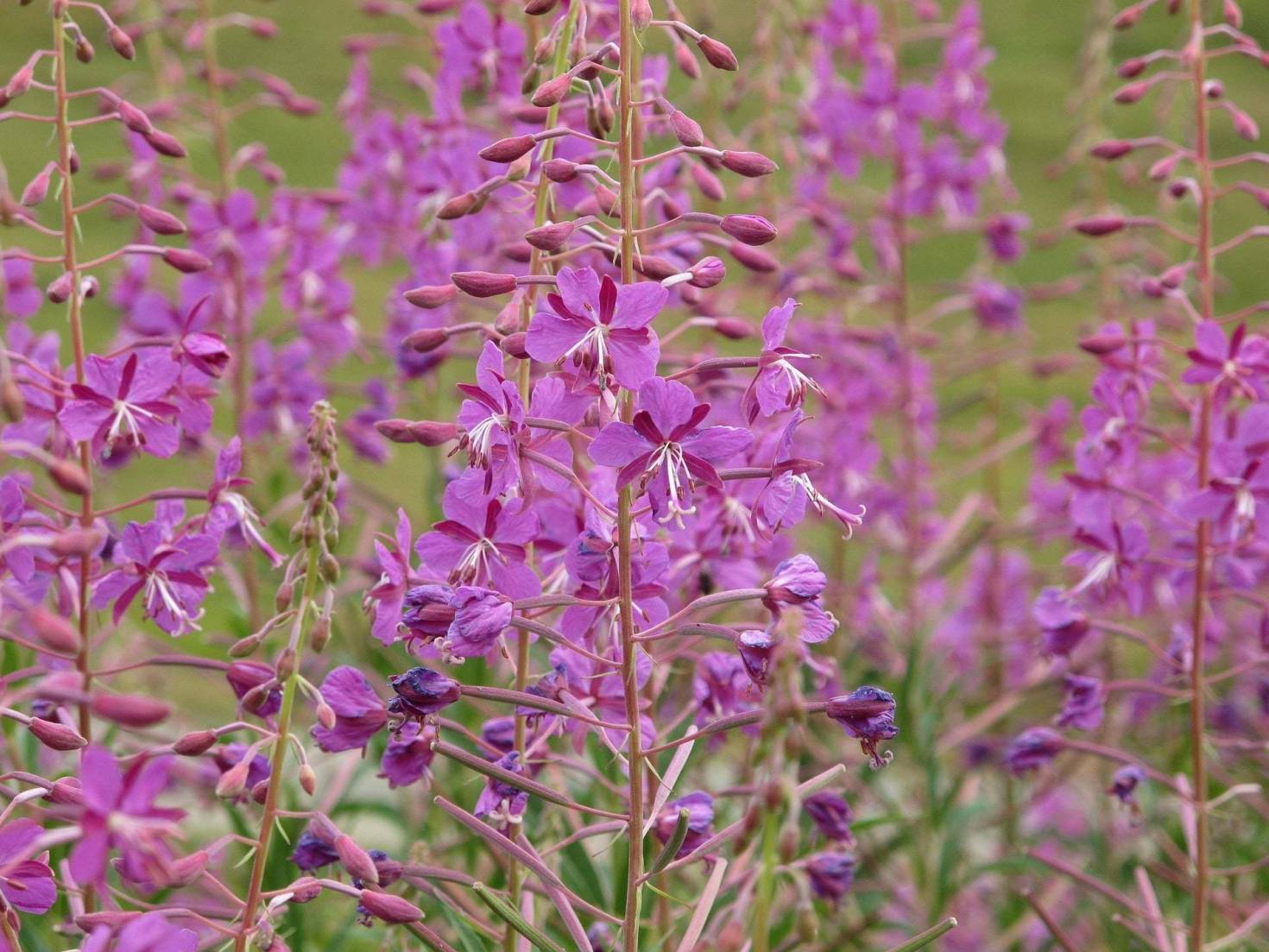
9. Navigation in the wilderness
Many people caught in emergency situations try to navigate and end up walking in circles. We’re so dependent on technology such as GPS nowadays, but more than likely this won’t be available. Again, there are ideal navigation tools such as a compass and a map. But if you find yourself lost in the wilderness without these, there are several navigation methods you may want to take advantage of in hopes of finding help.
Following rivers and streams is suggested, because in a lot of cases they lead to civilizations. Additional approaches include following the sun, moon, stars (such as the North Star), and certain plants and trees.
10. Create a rescue signal
It’s possible you wind up in circumstances where navigation doesn’t make as much sense, or you feel you don’t need to stray very far from basecamp. To get rescued quicker or at all, you’ll need to be able to get someone's attention with a signal. The goal is maximized visibility.
A fire is one of the most well-known signals. People may or may not be able to see the fire but there’s a good chance someone will see the smoke rising. Another example is a shiny object such as a mirror or something metallic. You can use the sun to give off a far-reaching reflection. If you have any bright clothing or blankets available you can lay them down in a visible area to potentially get someone’s attention. If there are large rocks available you can use them to spell out H-E-L-P or S-O-S.
Whatever you use, be aware of contrast. In other words, make sure it will stand out from the background it's in, or it won't be very effective. If the background a rescuer will see is dark, make your signal with light-colored materials and vice versa. 3 is the universal distress signal (or 6 in the U.K. and European Alps) so if it's possible, create 3 signals.
This video shows how to make a signal fire in just a few simple steps.
One of the best possible ways to learn about any subject is to take advantage of the advice and experience of experts. Fortunately, there are a lot of people out there that either by love for the outdoors or necessity have become masters of survival. Here are a few you might want to take a look at in no particular order.
- Mykel Hawke
- Ray Mears
- John “Lofty” Wiseman
- Les Stroud
- Lisa Fenton
- Tom Brown
- Mors Kochanski
- James Mandeville
- David Canterbury
- Rüdiger Nehberg
- Steve Backshall
- Bear Grylls
- Karen Hood
- Matt Graham
- Les Hiddins
It should also be said that an important preventative action you can implement is to prepare a survival kit and try to always have it with you. Awareness is one of the most valuable principles to practice in life. Becoming aware of these 10 tips should place you in a better position to stay alive in a survival situation. Most of them are simple and doable, as long as you know what to do. And don't forget, if you love the wilderness we've got a great selection of off-grid land and camping land for sale.

